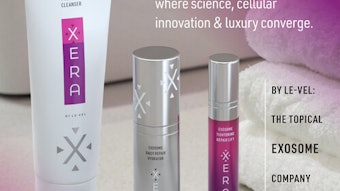This article, originally titled “Skin Care—Then and Now: Product and Professional Regulations,” is an edited version of an article that originally ran in the January 2013 issue of Skin Inc. magazine. All rights reserved.
Laws and regulations provide guidance and shape many aspects of the professional skin care industry. Federal laws, and the regulations put into place to enforce them, dictate how skin care products are made, advertised, used and sold. Professional regulation, and what it entails from state to state, has also become a significant part of the professional skin care industry as a whole.
To truly understand the evolution of skin care ingredient regulations in the United States, let’s rewind to 1938, when Congress gave the U.S. Food and Drug Administration (FDA) authority to oversee food, drug, and cosmetic safety. It’s also important to examine two laws and regulations that have played crucial roles in the beauty industry: the Federal Food, Drug and Cosmetic Act (FD&C Act) of 1938, which established definitions of “drugs” versus “cosmetics”; and the Fair Packaging and Labeling Act (FPLA) of 1966, which prohibited marketing of misbranded and/or adulterated products. Also important, the Wheeler-Lea Act (or Advertising Act), passed in 1938, provided the Federal Trade Commission (FTC) authority to regulate advertising on food, drug, cosmetics and medical devices.
The Consumer In Mind
Since the inception of legislation and regulation overseeing beauty, cosmetics and personal care products, the federal government and the professional beauty industry have worked to protect consumers. The FDA’s authority over cosmetics and personal care products is wide-ranging. Manufacturers of beauty and personal care products are required to ensure their products meet the standards set forth by law.
The Fair Packing and Labeling Act, established in 1966, requires consumer products to contain a proper informative label. Professional skin care products may be considered misbranded if any of the following examples exist:
- The product container is misleading;
- The label does not include required information;
- The label information is false; or
- The label and the required information is not prominent.
Established in 1976 with the support of the FDA and the Consumer Federation of America (CFA), the Cosmetic Ingredient Review (CIR) expert panel was formed to determine the safety of ingredients under their intended conditions of use. The panel, comprised of seven members, including a dermatologist, toxicologist, consumer representative and an industry scientist, review and assess ingredient safety data, extensive research, literature and studies. The CIR safety assessments are available for public review and are published in the International Journal of Toxicology.
Cosmetic or Drug?
Chemicals contained in a product, as well as the designated use of a product, help determine the product’s skin care category. Because skin care products can have the effects of both a cosmetic and a drug, the distinction between cosmetics and drugs may be blurred.
According to the FDA, a drug is defined as a substance intended for use in the diagnosis, cure, mitigation, treatment or prevention of disease, AND is a substance (other than food) intended to affect the structure or function of the body. A cosmetic is intended to be rubbed, poured, sprinkled or sprayed on, introduced into or otherwise applied to the human body for cleansing, beautifying, promoting attractiveness or altering the appearance.
Products that move past the cosmetic definition, such as a prescription acne treatment, are considered drugs under these definitions. But many drugs can have cosmetic properties—antiperspirant deodorants and dandruff shampoo, for example. Skin Protectant Drug Products is one of the most important over-the-counter drug categories. Other categories include medical devices, such as devices used for microdermabrasion services and hair removal.
The final Monograph, or detailed report/study, issued in 2003, confirmed that claims of “moisturizes, soothes, smoothing, rubbing, friction and lubrication” are cosmetic claims.
The intended use of skin care products influences the classification of that product. The Wheeler-Lea Act, mentioned previously, gave the FTC the authority to regulate advertising claims of FDA-regulated, nonprescription personal care products. Marketing a skin care product with a drug claim or a drug with a cosmetic claim can result in warning letter from the FDA.
Regulations By State
Challenges facing skin care regulation emerge when the process of compliance differs from the standards set in place by the federal government. This is the case with skin care regulation in some individual states. How to regulate and what to regulate must be clear. Over-regulation could have a negative effect and derail the goals of legislation.
Currently in California, proposed regulations for compliance of the Green Chemistry Initiative have caused concern for many industries, including skin care manufacturers, brands, distributors and retailers. The potential impact, positive or negative, of the Green Chemistry Initiative is not yet clear, but the main purpose of the regulations are to identify chemicals of concern used in manufacturing, and find alternatives to lessen environmental and public health impacts. Additional information regarding California’s Green Chemistry Initiative can be found at www.probeauty.org/greenchem.
The Safe Cosmetics Alliance
Currently, the FDA maintains a voluntary registration program for cosmetics and skin care products. Newly proposed legislation supported by the Safe Cosmetics Alliance (SCA), which is made up of various industry groups, would enhance the FDA’s authority over personal care products. The Alliance was formed to encourage and support science-based legislative and regulatory policies that enhance current consumer safeguards and strengthen FDA oversight of cosmetic and personal care products to ensure continued product safety. The Cosmetic Safety Amendments Act of 2012 (HR 4395), would promote innovation and growth, and maintain high safety standards for the nation’s beauty and personal care industry. Additional details regarding the Safe Cosmetics Alliance, and the Cosmetic Safety Amendments Act can be found at www.safecosmeticsalliance.org.
Your Responsibility
Continuing efforts to provide consumer safety based on sound science is essential for the growth and prosperity of the professional skin care industry. Congress uses legislation to provide authority to agencies, such as the FDA, and to update or change the authority over cosmetics and skin care products, Congress would need to change the law.
As a member of the beauty industry, it important for you stay informed and knowledgeable about such regulatory issues and challenges, as they affect the growth of the beauty industry—and potentially its future.
Myra Y. Irizarry is the director of government affairs for the Professional Beauty Association (PBA). She heads PBA’s efforts to track and respond to legislation with potential to affect the beauty industry at both the state and federal levels, and works with an extensive group of industry volunteers to coordinate grassroots efforts and establish working relationships with legislators. She can be contacted at [email protected].










